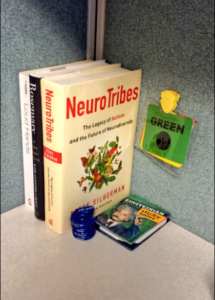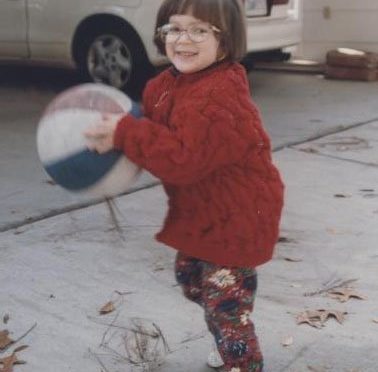Note: A version of this piece was originally published at Thinking Person’s Guide to Autism as a part of a series of post highlighting autism and accommodations during Autism Acceptance Month.
The statistics around autism and employment can be incredibly discouraging. Forty-two percent of autistic people in their twenties — people like me — are unemployed, even though only 26% of overall young disabled people are out of work. This might seem counter-intuitive. After all, if someone can do well in college or even graduate school, surely they should be able to do well once they join the workforce? Unfortunately, it doesn’t work that way.
Like many of my autistic peers, I have struggled to keep a job. I was fired from the first full-time job I ever had after just two weeks: While I had excellent credentials, including a graduate degree, I was told that I was a “bad cultural fit.” After discussion with some friends who had human resources experience, I learned what that expression was code for: I hadn’t done anything that violated company policy, but something about me was too strange. Something about me made other people uncomfortable.
The next year, I received my autism diagnosis.
Post-Americans with Disabilities Act (ADA), employers are required to provide “reasonable accommodations” to qualified job applicants and employees. These accommodations guidelines are fairly clear for many types of disabilities, for example, a blind person might need documents in large print, or Braille in order to read them.
Workplace accommodations are less straightforward for autistic people, because it’s hard to measure what our skills and deficits are, and those characteristics can vary so widely from person to person — or even from day to day. Some days, I’m on top of everything; Hyperfocus can make me incredibly efficient. Other days, my executive functioning is so bad that I have trouble leaving the house.
This kind of “functioning” variability isn’t unusual. Accommodating autism can take some really out-of-the-box thinking and flexibility. Unsurprisingly, this often does not go over very well for managers or organizations with entrenched expectations and methods. People don’t like being asked to change, especially when it isn’t clear that a specific change is going to be effective.
Sometimes, autistic differences can be a source of shared humor and camaraderie in the office. My tendency to take certain phrases or ideas too literally can be funny to me and my coworkers. Not every autistic trait is a deficit or a skill in the workplace. Sometimes they’re just a part of who I am, and my coworkers can appreciate that.

Right now, I am fortunate to work at an organization with a disability rights and inclusion focus: the Association for University Centers on Disability, or AUCD. My supervisor, Dawn Rudolph, is willing to work closely with me to help me do my best. She describes the process of accommodating my autistic brain as, “building the plane as we’re flying it.” That is: I’m already at work. We’re here. Now the goal is to keep the plane in the air.
My accommodations require frequent adjustments. This can take a lot of patience. Many employers might wonder why to even bother. However, I bring a unique perspective and a depth of interest that only an autistic person can bring. I see things my coworkers don’t see. I have talents that reflect well on the organization as a whole. It’s not just good for me to be employed, it’s good for my employer too.
Sometimes, the plane gets very close to a crash landing. The weather can turn on a dime. It is neither straightforward nor easy. But it’s worth it.
For more on accommodating work for autistic people in an office environment, please check out this awesome video! Liz Weintraub, a long-time intellectual and developmental disability advocate interviews me about what kinds of accommodations I use at work and why employing disabled people is worth it.














